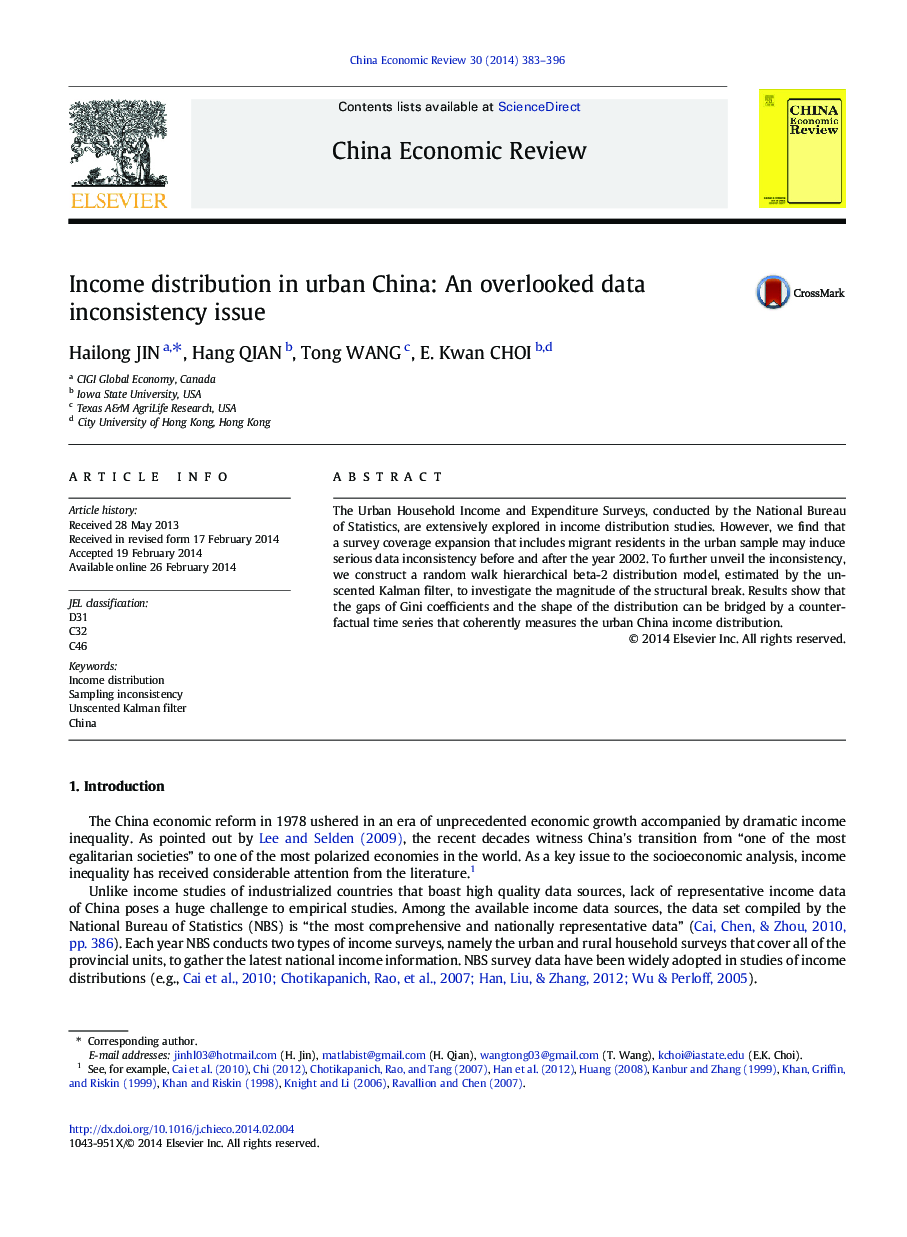| Article ID | Journal | Published Year | Pages | File Type |
|---|---|---|---|---|
| 5047371 | China Economic Review | 2014 | 14 Pages |
Abstract
The Urban Household Income and Expenditure Surveys, conducted by the National Bureau of Statistics, are extensively explored in income distribution studies. However, we find that a survey coverage expansion that includes migrant residents in the urban sample may induce serious data inconsistency before and after the year 2002. To further unveil the inconsistency, we construct a random walk hierarchical beta-2 distribution model, estimated by the unscented Kalman filter, to investigate the magnitude of the structural break. Results show that the gaps of Gini coefficients and the shape of the distribution can be bridged by a counterfactual time series that coherently measures the urban China income distribution.
Related Topics
Social Sciences and Humanities
Economics, Econometrics and Finance
Economics and Econometrics
